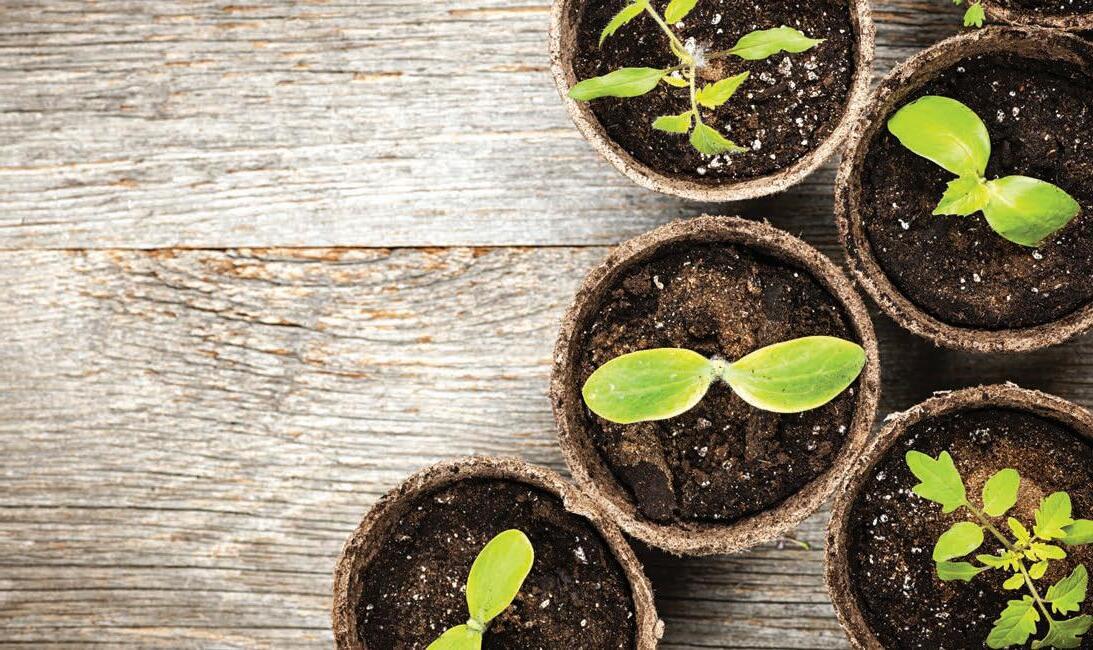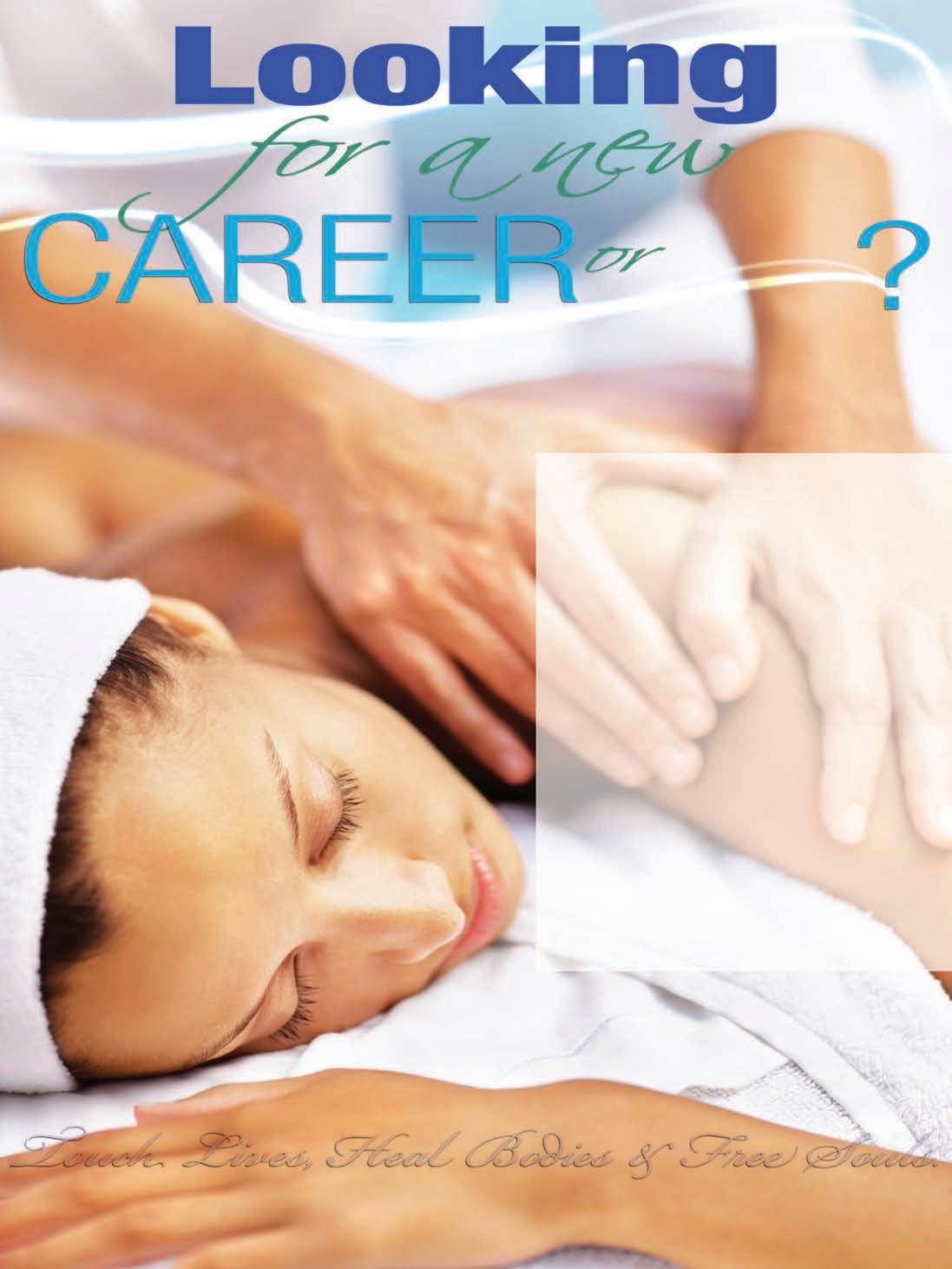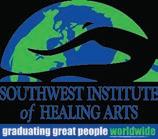Health Benefits of Gardening

Physician-Approved Stress Busters
Balancing Act Foods That Support Hormone Health
Eco-Friendly Gifts for Mom


Health Benefits of Gardening

Physician-Approved Stress Busters
Balancing Act Foods That Support Hormone Health
Eco-Friendly Gifts for Mom


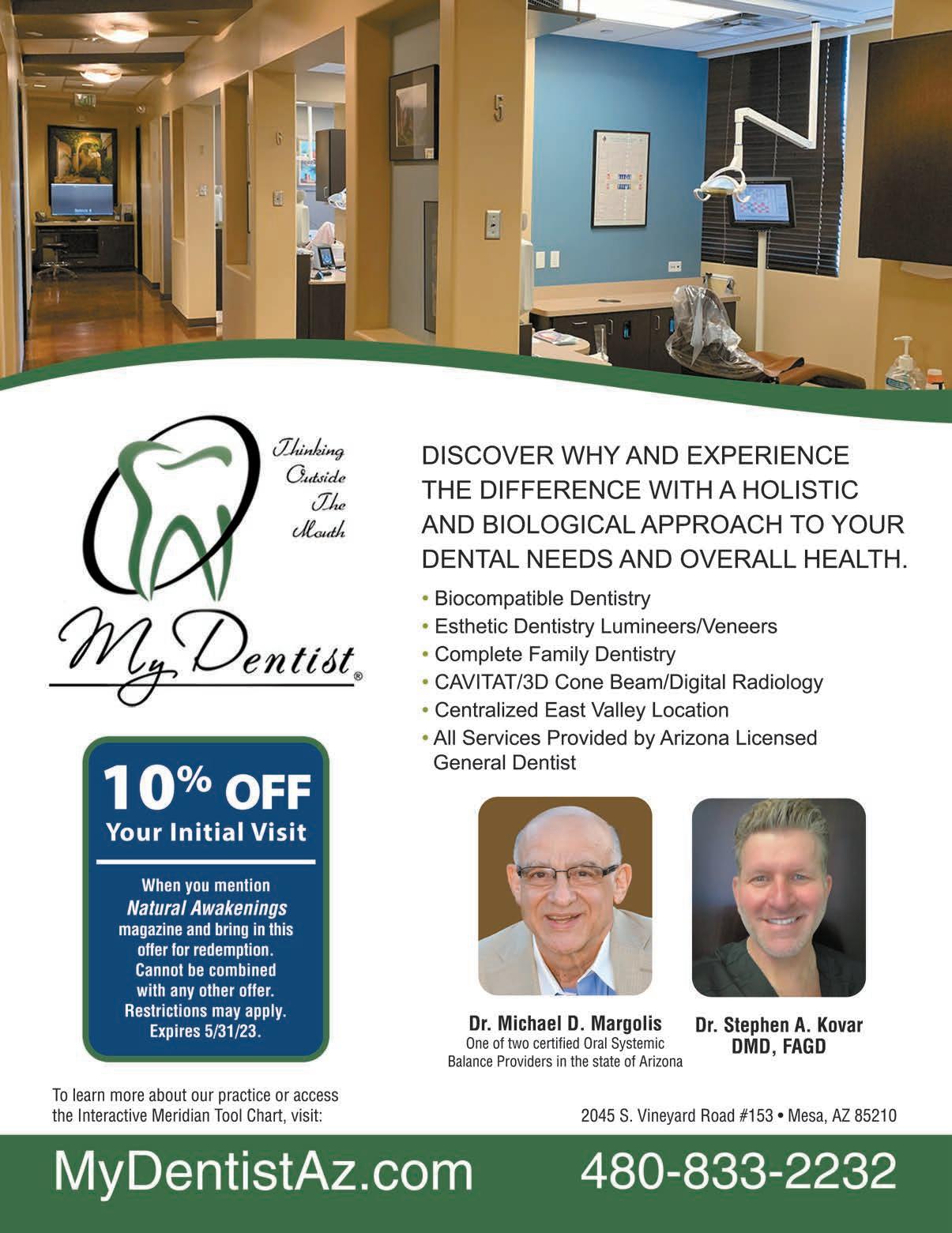
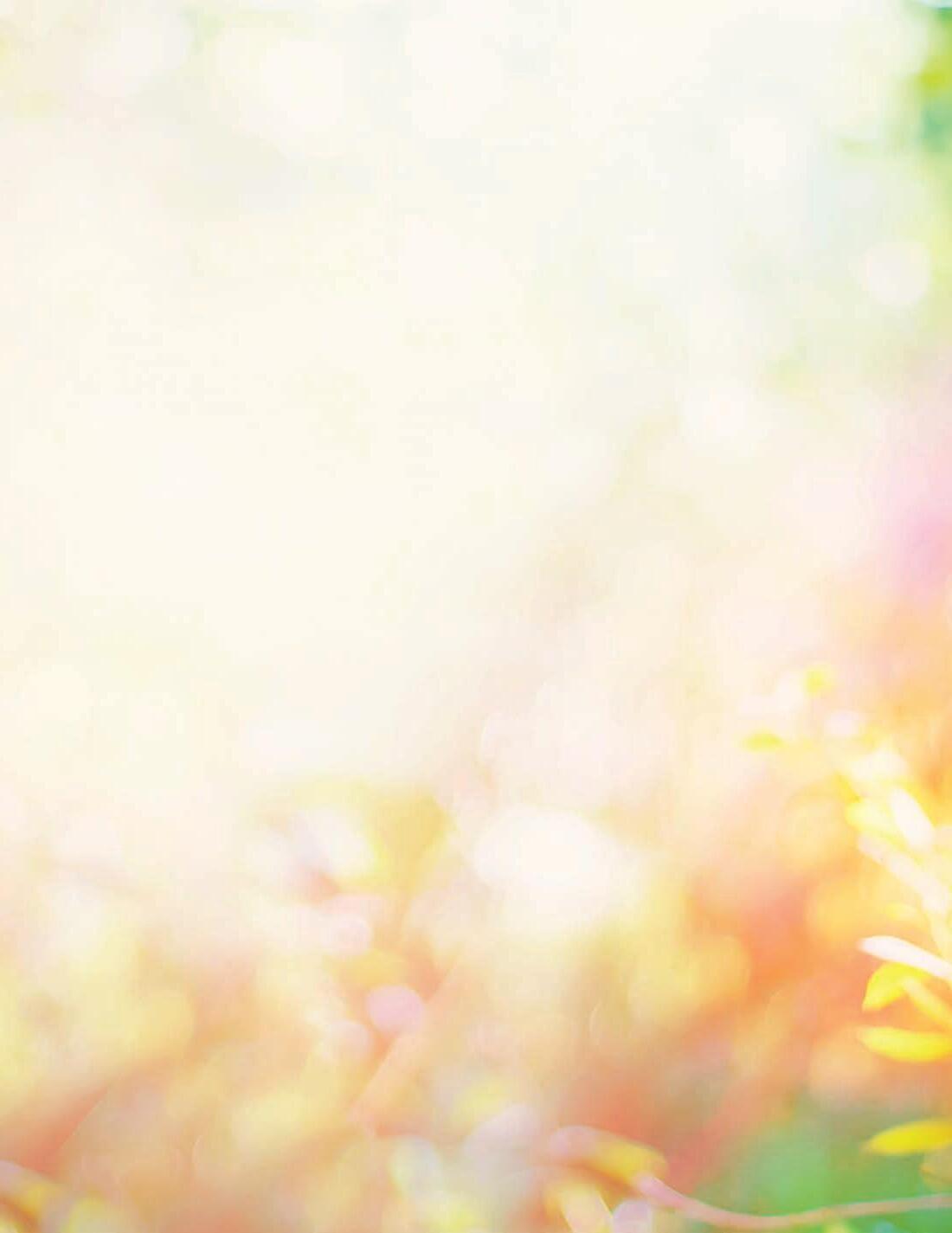

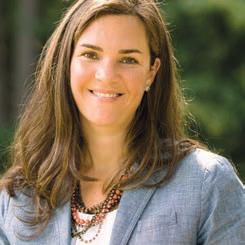









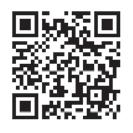




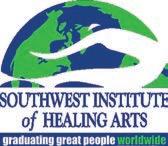

Find additional articles online at NaturalAZ.com. Go to the homepage and explore local businesses and articles exclusively from Natural Awakenings.
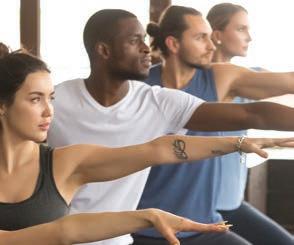

CAROL PENN
on Finding Calm in a Chaotic World
health briefs
Light Therapy for Autoimmune Symptoms


Reversing Type 2 Diabetes With Diet
Ashwagandha May Improve Women’s Sexual Experience
global briefs
Sulfur Shortage Predicted

Fir Trees Die in Record Numbers
Using Algae for Industrial Carbon Capture, Food, Fuel and Plastic

Check out the latest events at naturalaz.com/calendar NatPainTreat.com

Natural Awakenings is a network of natural lifestyle magazine publishers empowering local communities with knowledge, resources and connections to lead healthier lives on a healthy planet.


To advertise with Natural Awakenings or request a media kit, please email PhoenixAds@NaturalAZ.com
Deadline for ads: the 10th of the month. EDITORIAL
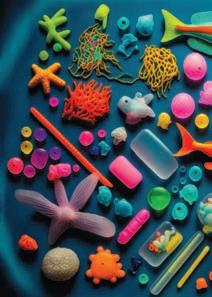
Go to NaturalAZ.com/pages/contact to inquire about editorial opportunities. Deadline for editorial: the 10th of the month.

Calendar events are online only, and can be submitted at NaturalAZ.com/calendar NATIONAL
Advertise your products or services in multiple markets!
Natural Awakenings Publishing Corp. is a growing franchised family of locally owned magazines serving communities since 1994. To place your ad in other markets call 239-206-2000. For franchising opportunities call 239-206-2000 or email NaturalAwakenings@KnoWEwell.com.
Tracy Patterson, BSc, MES DESIGN & PRODUCTION
Vegetorium, LLC
COPY EDITOR
Sara Gurgen
DIGITAL PLATFORMS
Hass Solutions Locable
Natural Awakenings – Phoenix 17470 N Pacesetter Way Scottsdale, AZ 85255 Tracy@NaturalAZ.com NaturalAZ.com


NATIONAL TEAM
CEO Kimberly B. Whittle

National Editor Sandra Yeyati
Editor Brooke Goode
Copy Editor/Proofreader Melanie Rankin
Design & Production
National Advertising
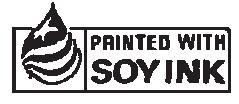
Gabrielle W-Perillo
Lisa Doyle-Mitchell
© 2023 by Natural Awakenings. All rights reserved. Although some parts of this publication may be reproduced and reprinted, we require that prior permission be obtained in writing.
Natural Awakenings is a free publication distributed locally and is supported by our advertisers. Please contact us to find a location near you.
We do not necessarily endorse the views expressed in the articles and advertisements, nor are we responsible for the products and services advertised. Check with a healthcare professional regarding the appropriate use of any treatment.
Reading this month’s Eco Tip, on page 14, brought back fond memories of Mother’s Day with my mom. We started a tradition when I was young; instead of buying her a gift, we would do something together. And that turned into a specific project I would take on for her each year.
Since we had horses and Mother’s Day landed during shedding season, the yearly project became me clipping the bridle path and legs and generally doing a “spring horse cleaning.”
It was actually my mom’s idea. She had pretty much everything she needed, and since we both had a horse hobby, spending time together with the horses meant a lot to her. Getting rid of her horse’s winter hair was the one activity that she found more of a chore, and she didn’t mind passing it off to me, particularly given she wasn’t an expert with the clippers! Mind you, neither was I, but it’s all relative…
So, every Mother’s Day, we’d head out to the boarding stable, and I’d fire up the electric clippers and get to work. For a number of years, she had an Appaloosa. This breed is known for its sparse mane and tail, and Blue was no exception. He had such a skimpy, ratty mane that clipping the bridle path turned into roaching (shaving off) his mane.
And then came the arduous task of brushing the mud off the legs and fetlocks (the ankle areas) so that I could get the clippers to work properly and not get them gummed up with mud.
Finally, major shedding blade and brushing jobs of the whole body, and voila, a shiny new horse!
There was a lot of chatting and laughing along the way, especially since the hair coming off the horse usually ended up stuck to our clothing—we were quite a sight after this endeavor!
My mom passed away many years ago, but I’ve always been able to smile at the thought of our time spent together on Mother’s Day, and throughout the year. In the end, these times turned out to mean more than any trinket I could have bought her, and I’m so grateful for the memories.
Please note that all deadlines (advertising and editorial) are the 10th of the month prior to the edition being published.
For example, May 10 is the deadline for all June edition submissions.


Inc. is hosting an Integrative Neuro-Linguistic Programming (NLP) Practitioner Certification Training June 29 through July 2 at the Courtyard by Marriott Scottsdale Salt River. Attendees will master
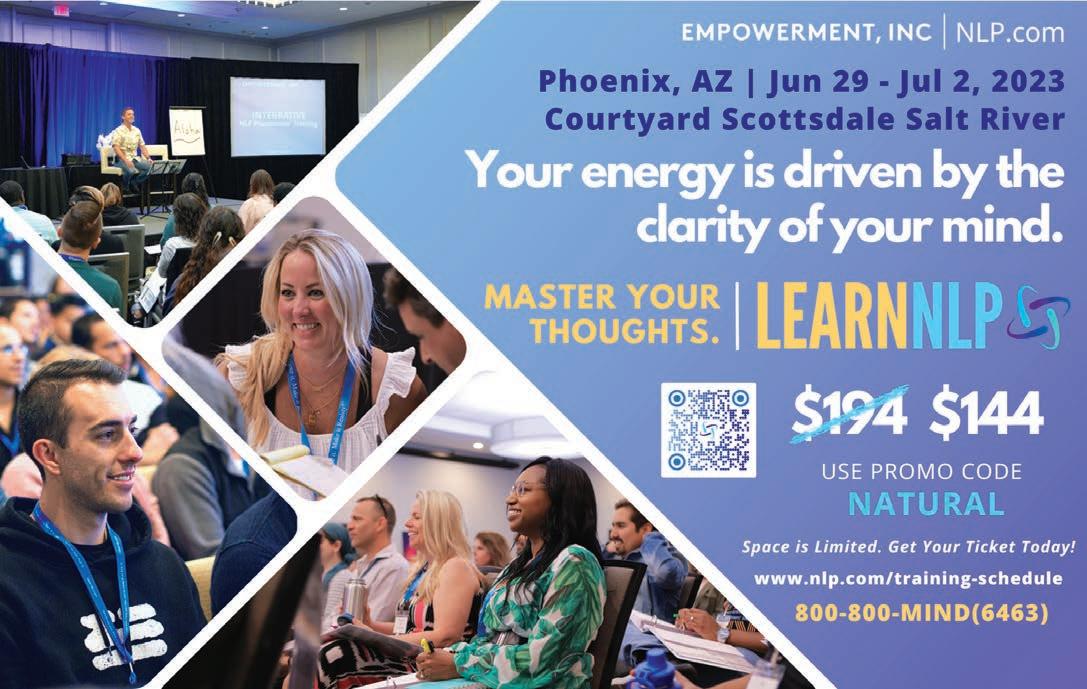
ose searching for their purpose, those that want more conscious communication in their relationships, those having difficulty achieving personal or professional success, those struggling to open or expand their business, and those lacking motivation in improving their health and fitness, may want to consider attending
e each have the ability to empower ourselves. Sometimes we get stuck, but we don’t have to stay stuck. We can overcome so much by unlocking the power of language and communication of the unconscious mind.
NLP is one of the most effective, proven techniques. Described as a user manual for your conscious and unconscious mind, NLP offers an opportunity to explore how your mind and emotions work in achieving goals, and how to let go of negative emotions and behaviors to create a mindset that can achieve lasting results. This NLP training program will provide proven techniques to communicate more effectively; build rapport easily; reprogram the mind for success; release limiting beliefs and behaviors; gain clarity in core values; and overcome procrastination, lack of motivation, depression and phobias.
Location: 5201 N. Pima Rd. Cost: $144 (use code: NATURAL). To register, visit nlp.com/training-schedule. For more information, call 1-800-800-6463 or email Info@nlp.com. To learn more, visit nlp. com. See ad, page 15.

Art Journeys is hosting Spiritweave with Sally Blevins, BFA, MA, LPC, as the artist guide November 1 through 5 at the Sonoran Desert Inn and Conference Center, in Ajo, Arizona.
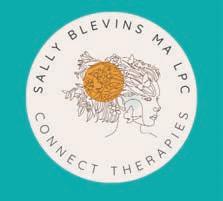
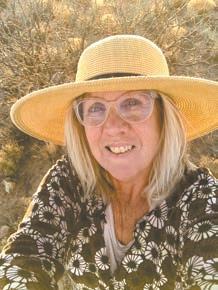
Blevins has more than 40 years’ experience teaching art, 12 years’ experience providing art therapy, and is a skilled fiber and mixed media artist. She currently travels full time to various venues sharing her talents and providing an experience that is not only artful but creates a sense of renewal. She invites you to revive your spirit by joining her in mixed media art making and celebrating the Day of the Dead (November 2).
Retreatgoers will attend a private gallery opening and mural walk, a sound healing ceremony and dine on locally sourced cuisine while lodging at the Sonoran Desert Conference Center. They will learn their own visual language, create mixed media visual journal pages and a retablo/nicho, along with smaller inspirational art pieces in the lovely courtyard at the Conference Center.
This retreat is limited to 16 individuals in order to provide excellent access and care.
Cost: $1,400 (Wednesday evening through Sunday brunch). Price includes lodging, meals, art instruction and wellness activities; excludes transportation and one evening meal out. There will be a price for Ajo area residents that do not wish to include the lodging. There is a nonrefundable $75 registration fee, which is payable at Venmo/ Spiritweave. Register by email at Sally@ConnectTherapiesllc.com. A complete itinerary, including pricing and payment schedule, will be sent in response to your email. See ad, page 17.
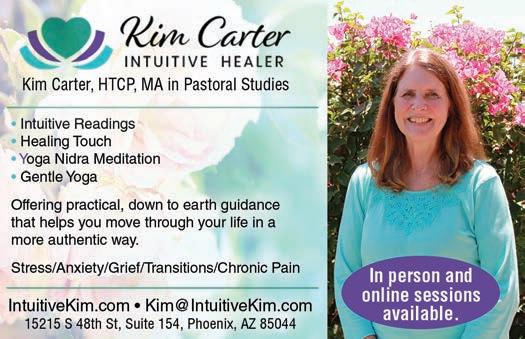
Join Natural Awakenings and KnoWEwell for a life-changing series entitled The Healthy Man each Tuesday in June at 5 p.m. PDT/8 p.m. EDT.
n Lifestyle choices that add years to a man’s life and life to his years
n Tips to maintain youthful energy, a desired weight and a healthy libido
n Strategies for optimal eye health
n Good posture techniques for peak human performance and pain-free aging
n Habits that create resilient kids and a lasting legacy
SPEAKERS
n Ben Greenfield, human performance consultant and author of 17 books including Boundless Parenting



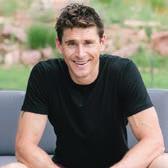
n Dr. Eric Plasker, chiropractor and author of The 100 Year Lifestyle
n Dr. Tracy Gapin, board-certified urologist and author of Male 2.0 and Codes of Longevity
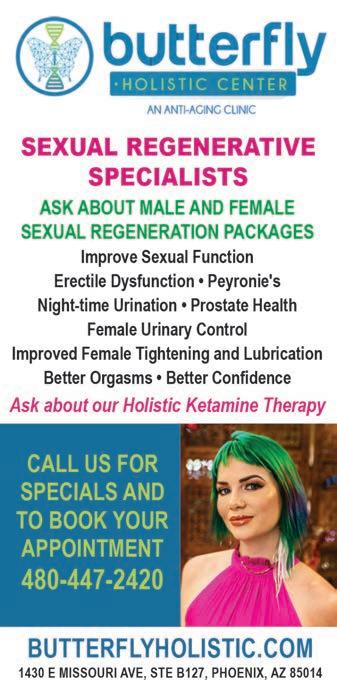
n Dr. Krista Burns, chiropractor, founder of the American Posture Institute and author of The Posture Principles

n Christopher Smith, co-founder of Family Brand and the Campfire Effect, creating leaders at home and in business
n Dr. Bryce Appelbaum, board-certified optometrist and pioneer in neuro-optometry

n Dr. Tarin Forbes, board-certified integrative doctor specializing in anti-aging and metabolic medicine


n Dr. Alan Christianson, naturopathic endocrinologist specializing in thyroid disease and author of The Metabolism Reset Diet and The Thyroid Reset Diet

Admission is $59, which includes all Tuesday evening sessions and a one-year membership to KnoWEwell. To learn more and register, visit tinyurl.com/yc2hstxa or scan the QR Code.


New research has found that exposure to natural environments may reduce the risk of hospitalization for older adults with Alzheimer’s disease, related dementias and Parkinson’s disease. The cohort study included approximately 62 million Medicare beneficiaries aged 65 years or older that lived in the contiguous United States from 2000 to 2016. Researchers looked at ZIP-Code-level greenness, percentages of park cover and blue space (water) cover, as well as hospitalizations. They found that exposure to greenness, park cover and blue space cover reduced hospitalizations for patients with Parkinson’s. Greenness—but not park or blue space cover—was associated with a lower risk of hospitalization due to Alzheimer’s disease and related dementias.
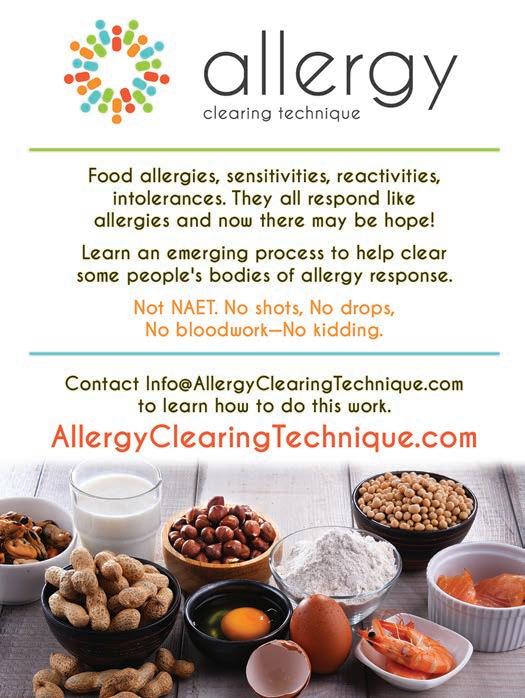
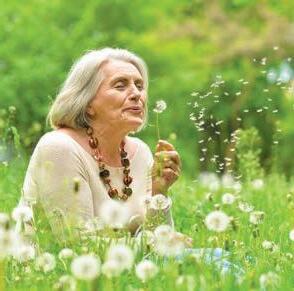 Ruslan Huzau/ShutterStock.com
Ruslan Huzau/ShutterStock.com
Water immersion during labor is an increasingly popular birthing option for healthy women that experience a straightforward pregnancy, labor spontaneously at full term and plan to give birth in a midwifery-led care setting. The process involves immersion in a birth pool to achieve relaxation and pain relief during the first and possibly part of the second stage of labor. The mother exits the pool for the actual birth, allowing the infant to emerge outside of the water. This method is different from a water birth, during which the woman remains in the pool as the infant emerges into the water and is then brought to the surface to initiate breathing.
In a new systematic review and meta-analysis published in BMJ Open, researchers compared the interventions and outcomes of water immersion, water birth and no-water-immersion births. After reviewing 36 studies encompassing the experiences of about 150,000 women, researchers found that water immersion significantly reduced the use of epidurals, injected opioids, episiotomy, maternal pain and postpartum hemorrhage. There was also an increase in maternal satisfaction and improved odds of an intact perineum with water immersion. Water births were associated with increased odds of the tearing of the umbilical cord from the placenta, making delivery of the placenta difficult, although the absolute risk remained low (4.3 versus 1.3 per 1,000). There were no differences in any other identified neonatal outcomes.
Scientists have developed a water-activated, disposable, paper battery, according to a proof-of-concept study published in Scientific Reports The developers believe that their invention could be used to power a variety of low-power, single-use electronics, such as smart packaging, environmental sensors and medical diagnostic devices, thereby reducing their environmental impact.
The single-cell battery consists of one square centimeter of paper treated with salts. One side is printed with ink containing graphite flakes, which serves as the positive terminal, and the other side is printed with ink containing zinc powder to create the negative terminal. Another layer of ink containing graphite flakes and carbon black is applied over that, linking the battery’s positive and negative ends to two wires secured by wax.
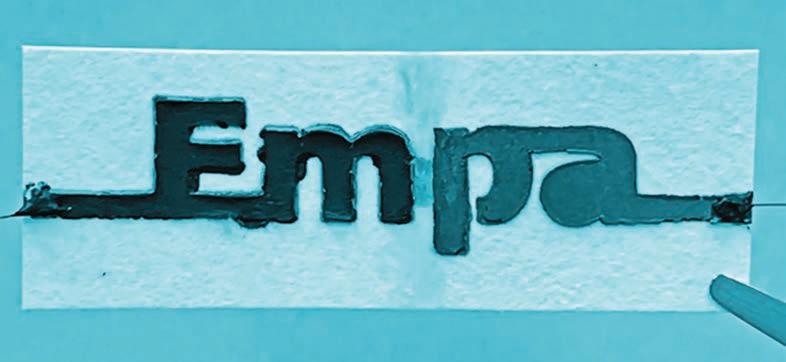
When a few drops of water are added to the paper, the salts dissolve, releasing charged ions that spread across the paper to activate the battery. In tests, researchers were able to reach a stable 1.2 volts. (The voltage of a standard AA alkaline battery is 1.5 volts.) The battery’s performance decreased significantly after an hour when the paper dried. However, after two more drops of water were added, the battery maintained 0.5 volts for an additional hour.
Roughly measuring the size of Florida, the Thwaites Glacier is one of the most rapidly melting ice formations in Antarctica, having retreated more than eight miles since the 1990s. Scientists refer to it as the “doomsday glacier” due to concerns about its collapse, which could raise global sea levels by more than a meter, causing devastation along coastal cities and communities.
According to two papers published in the journal Nature, researchers are learning more about the driving forces behind the glacier’s rapid retreat, thanks in part to a robot deployed through a 600-meter-deep borehole in the glacier. Although melting has increased beneath the ice shelf, the current melt rate is slower than many computer models had estimated. A layer of fresh water between the bottom of the ice shelf and the ocean below slows the rate of melting along flat parts of the shelf.
Scientists discovered that the melting had produced a stepped topography across the bottom of the ice shelf, resembling a staircase, as well as cracks in the ice where rapid melting was taking place. “Our results are a surprise, but the glacier is still in trouble,” says Dr. Peter Davis, oceanographer at the British Antarctic Survey and lead author of one of the papers.

This year, consider putting an ecological spin on Mother’s Day by showering her with gifts that honor Mother Earth. Here are some sustainable gifting ideas.

Flower Power
Lavish her with an eco-friendly bouquet. Conventional blooms that are flown in from South America can be riddled with fungicides, carcinogen-laden floral foams, sheens and other hazardous chemicals, not to mention the huge carbon footprint required to bring them here. Locally grown, organic flowers at farmers markets, sustainable florists and small-business greenhouses are produced with fewer or no chemicals, support pollinators and require no jet fuel to get to mom’s doorstep.
Choice Chocolates
Satisfy mama’s sweet tooth with organic, fair-trade chocolate that helps cocoa farmers earn a living wage and does not promote deforestation. Opting to buy ethical chocolate prevents child and slave labor and provides women equal pay as well as opportunities to own a business. Look for certified, fair-trade labels as well as non-GMO and organic certifications.
Bling Blessings
Adorn her with ethically sourced and sustainable jewelry created from recycled precious metals, Fairmined Ecological gold and conflict-free gemstones. Beautiful, one-of-a-kind creations can be found at local artisan fairs or online from eco-conscious jewelers. Look for sellers with sustainable jewelry certifications and those that use recycled, upcycled or reclaimed materials.
Climate Café
Fill her cup with bird-friendly, shade-grown, fair-trade coffees and teas that offer a healthier caffeine fix while protecting bird populations and canopy cover. Choosing products labeled Rainforest Alliance Certified or Bird Friendly helps to ensure the habitat for 40 species of migratory songbirds that winter in plantations.
There are so many ways to support the local economy while treating mom to an unforgettable experience that makes her feel extra-special. Give her a gift certificate for a massage, aromatherapy session or makeover at an organic salon. Treat her to a fabulous dinner at a vegan restaurant. Subscribe her to receive a monthly produce box from a community-supported agriculture outlet. Pack a healthy picnic and spend the afternoon together at the park. Create a gift basket of goods made by local artisans, including beeswax candles, pottery or body treats like handmade soaps and lotions.





 by Linda Sechrist
by Linda Sechrist
Medicine is changing as a new class of doctors endeavors to treat the whole person rather than the symptoms of disease, helping their patients achieve optimal health with lifestyle changes, medicine, herbs, supplements and modalities tailored to the individual. No longer reaching for a prescription pad as often, these functional and integrative physicians are spending an average of 45 minutes per office visit. Using their sleuthing skills and innovative skillsets, they ask probing questions about a patient’s current lifestyle and history, pinpoint the root cause of a problem and craft customized solutions.
To help someone manage stress, a functional or integrative doctor may suggest a daily dose of herbal tea, nightly entries in a gratitude journal, a visualization practice, brisk walks, gardening, art therapy, mindful meditation, a nutrient-rich diet that reduces food allergies, yoga poses and regular sessions of qigong or tai chi. Armed with an extensive list of better-for-you choices than addictive, prescription sleeping pills or tranquilizers, individuals are empowered to improve their health and eliminate stress. Studies suggest that 75 to 90 percent of illnesses are stress related. Getting to the root cause before it escalates into cardiovascular disease, depression or diabetes is what curious and compassionate doctors do.

“Because sleep is a great resolution to almost anything, it’s one of the first things I consider,” says Carrie Jones, a functional and naturopathic doctor in Portland, Oregon. “Stress can be physiological, caused by parasites, viruses, bacteria and toxins, as well as blood sugar imbalances. Not getting enough sleep, or poor sleep, is stressful to the body, which is on alert all the time.”
According to Jones, finding ways to coax the body into feeling safe can help people relieve stress and get a good night’s sleep. “People rarely realize that basic things such as joy, play, laughter and a community of supportive people have anything to do with feeling safe enough to sleep deeply. It’s why I inquire about those things,” she explains.
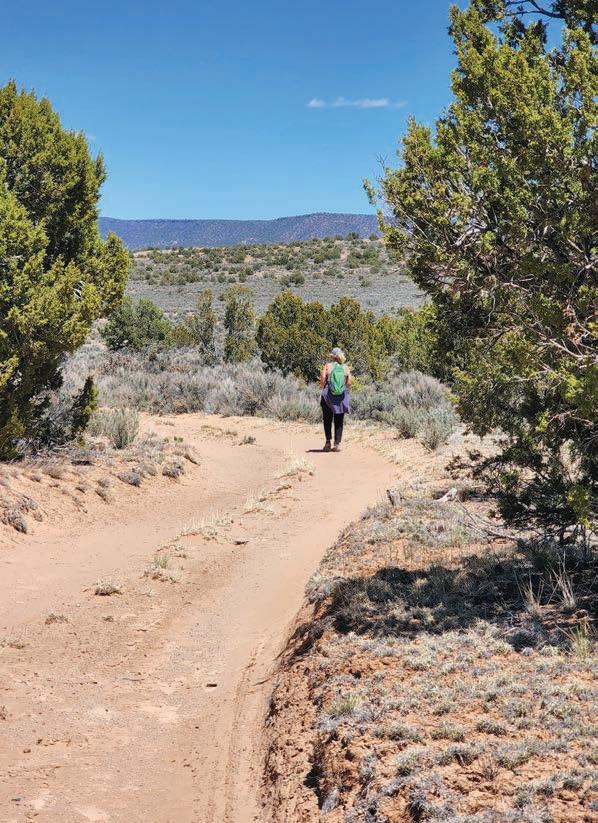


n Turn the thermostat down in the bedroom. A cool temperature combats insomnia.
n Snuggle under a weighted blanket. The gentle pressure signals the autonomic nervous system to go into rest mode.
n Install blackout shades. Light decreases melatonin, the sleep hormone.
n Avoid alcohol before bed, as it can disrupt the sleep cycle.
n Stop using electronics, including social media, television and phones, two hours before getting under the covers. The blue light emitted by screens restrains the production of melatonin.
Connecting and spending quality social time with friends helps to alleviate stress. Anna Cabeca, a triple board-certified obstetrician and gynecologist, advises, “Every day, stress causes the stress hormone cortisol to go up and oxytocin, the connecting hormone, to go down, lessening the desire to connect. It’s a double whammy for women in perimenopause and menopause, because
hormones are declining, and stress overloads the already overtaxed endocrine system.”
Rebecca Hunton, personalized medicine doctor and founder of Radiantly Healthy MD, in Melbourne, Florida, coaches her patients to modify unhelpful habits. “I’m always looking for that one thing that patients can easily change. Sometimes it’s teaching them the difference between stress resilience and stress avoidance. A stress avoidance activity is spending two hours playing a game on your phone that leaves you beating yourself up and feeling like, ‘Why did I waste all that time?’ If, on the other hand, an activity leaves you feeling energized and wanting to tackle the other things on your to-do list, you just did a stress resilience activity,” says Hunton.
n Meditation
n Prayer
n Chanting a mantra
n Expressing creativity, such as cooking or painting
Carol Penn is a dual board-certified physician and movement coach in New Jersey. While observing her 87-year-old father practicing qigong, a form of meditation in motion, she had an epiphany and saw a powerful life lesson occurring before her eyes. “Moving with strength and grace through his practice so close to the end of his life, it occurred to me that he was role-modeling what it would be like for me to be kind to my future self. I teach my patients from this perspective, visualizing their future selves full of health, vitality, wonder and awe,” says the author of Meditation in a Time of Madness.
Qigong has psychological and physical components, regulating the mind, body movement, breath and posture. “It balances and calms the autonomic, sympathetic and parasympathetic nervous systems so that you feel less stress upon completion of the practice. Movements are designed to build longevity on a cellular level,” Penn explains.
According to Lorraine Maita, a board-certified functional and integrative doctor in New Jersey, “The body sends out hormonal fight-or-flight signals when it’s distressed. In the initial stages,
there’s a release of adrenaline, followed by cortisol, keeping your body on high alert. To most people, stress is just worry, and they’re thinking they’re handling it, but stress can be like a viral program running in the background all the time. It’s still there whether you’re reacting to it or not, whether you’re stuffing it under the surface or not. It’s why you go to therapy with mental stress, or why you need someone to talk to for processing it.”
Maita is a proponent of alternative modalities that help people modulate the stress response. “I recommend HeartMath to my patients, which is self-regulation technology based on more than 32 years of scientific research on the psychophysiology of stress, resilience and the interactions between the heart and brain,” says the author of Vibrance for Life: How to Live Younger and Healthier.
Jaquel Patterson, a naturopathic physician and medical director of Fairfield Family Health, in Connecticut, might determine if her patient is suffering from chronic stress by testing their saliva for cortisol levels in the morning and evening. Noting that her favorite teas for sleep and relaxation are chamomile and passionflower, she explains that passionflower is for someone that can’t fall asleep because there’s a radio playing in their head. “For dealing with stress, I like adaptogens, such as Siberian ginseng, rhodiola rosea, ashwagandha, holy basil and L-theanine. The stress response requires a lot of B vitamins, along with magnesium and vitamin C,” she says.
Citing Hal Elrod’s book The Miracle Morning, Patterson recommends starting every day with a set of stress-relieving rituals Elrod calls “Life S.A.V.E.R.S.” She explains, “S is for silence, like meditation. A is for affirmations. V is for visualization, so you can visualize how your day is going to be. E is for exercise. R is for reading, and S is for scribing, writing things in a journal.”
Pointing out the differences between stress and anxiety, Patterson notes that anxiety is a continual rumination of thoughts, second-guessing and overthinking. Anxiety can cause stress, but stress can occur without anxiety. People with high anxiety sometimes have heart palpitations. Some stress is good for us. Without any stressors, Patterson cautions, we are unmotivated, lethargic and lacking in enthusiasm.
n Reflect Orb: This handheld biofeedback device can help an individual self-monitor their body’s physiology and learn to control the involuntary body-mind connection.
n Meditation apps: Insight Timer, Calm and similar apps offer guided meditations, relaxing music videos and meditation instruction for newbies and experienced practitioners.
n YouTube videos: Look for musical compositions with energy frequencies and binaural beats that encourage relaxation, promote positivity and decrease anxiety.
www.EckankarArizona.org
Linda Sechrist has been a contributing writer to Natural Awakenings publications for almost 20 years.

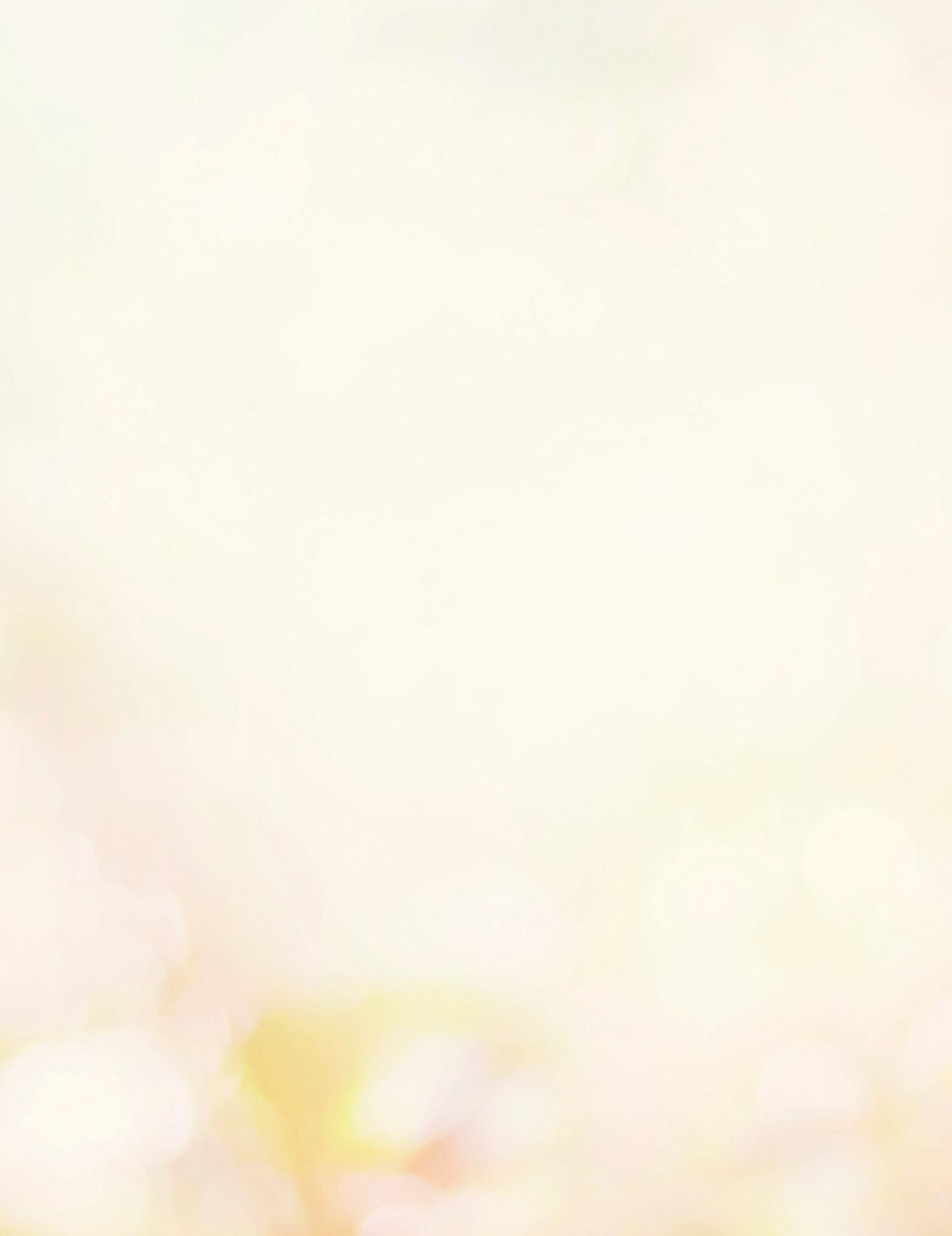

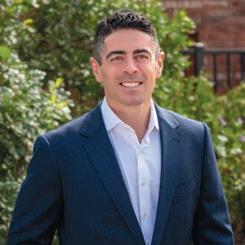



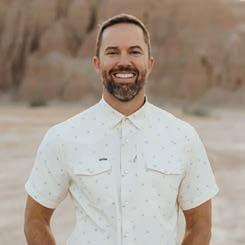
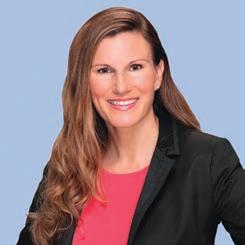




Think of hormones as the body’s messengers, sending signals that affect a host of functions. Produced by the pancreas, thyroid and other endocrine glands and organs, hormones drive our metabolism, impact mood, regulate blood pressure, manage our sleep cycles, influence sexual function and more. Key players are insulin, cortisol, thyroid and growth hormones, adrenaline, estrogen, progesterone and testosterone.
Keeping these hormones in proper balance is critical for health, and imbalances can lead to a wide range of effects, including diabetes, thyroid disease, unintended weight fluctuations, skin problems, fatigue, mood swings and infertility. While inactivity, stress, age and genetics impact hormone production, our food choices can significantly tip the scales.
Dr. Ann Lee is a naturopathic doctor and licensed acupuncturist based in Lancaster, Pennsylvania. When treating hormonal, thyroid and adrenal imbalances, she says it is important to focus on foods that provide the minerals and vitamins that support those systems. For women of all ages, she recommends blueberries, asparagus, lettuce, celery and papaya. Teens and women in their 20s can also benefit from apples, bananas, mangoes, avocados, cauliflower, broccoli, cucumbers, sweet potatoes and most lettuce varieties. The nutrients in these vegetables and fruits become even more important as women reach 30 and for those dealing with menopause, so Lee recommends more frequent consumption of these fresh, whole foods to support the adrenal and thyroid glands.
According to Lee, it is equally important to avoid foods that interfere with hormonal nutrition. She advises women over 50 to lower their caffeine intake. Dairy products contain naturally occurring hormones that can impede human hormone balance and should be eaten in moderation. “The less external hormonal exposure you have, the easier it is for your own hormones to balance,” Lee explains.
Despite the popularity of intermittent fasting, Lee believes that the trendy eating pattern can deny the body the vitamins and minerals it needs, causing it to produce more adrenalin and cortisol to make up for the loss. “People do intermittent fasting because it might feel good to have more adrenalin, and thus more energy, but it does come at a price—your hormones,” she says.

Most of the foods Lee recommends are low in calories. “In order to curb hunger, you have to eat them regularly, and that goes against intermittent fasting. People
In this yummy, low-carb taco recipe, cabbage leaves substitute for the tortillas and are filled with a mixture of protein-packed tempeh, veggies and lots of great spices. Compounds in tempeh called isoflavones serve as a natural remedy for menopausal relief.
1 Tbsp extra-virgin olive oil
1 small onion, chopped
2 garlic cloves, chopped
4 oz tempeh, cubed
½ tsp sea salt or more, to taste
½ tsp black pepper or more, to taste
½ tsp ground cumin
½ tsp chili powder
¼ tsp paprika
¼ tsp cayenne
¼ cup vegetable broth
2 cups stemmed and chopped fresh kale
4 to 6 large, green cabbage leaves, dipped for 30 seconds into hot water to soften
½ avocado, sliced
1 radish, sliced
¼ cup chopped fresh cilantro
½ lime, cut into wedges
Heat the olive oil in a large skillet over medium-high heat. Add the onion, garlic and tempeh and cook for 2 to 3 minutes until the onion softens and becomes translucent. Add the salt, pepper, cumin, chili powder, paprika and cayenne, stir, then add the broth and kale. Stir again to combine and cook until the broth thickens and reduces by at least
one-half. Taste and adjust the salt and pepper as needed.
Spread the cabbage leaves open on a large plate. Spoon the kale mixture into the center of the leaves. Add some of the avocado, radish slices and cilantro, then fold in the sides like a taco.
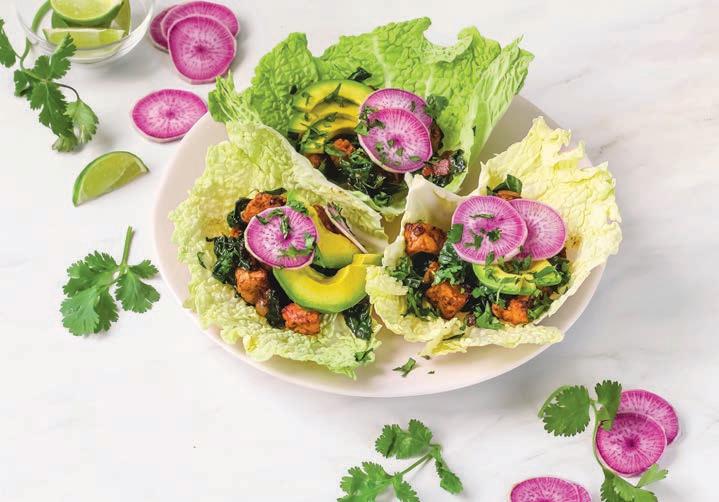
Serve with lime wedges.
Adapted from MenuPause. Copyright © 2022 by Dr. Anna Cabeca. Used by permission of Rodale Books, an imprint of Random House, a division of Penguin Random House LLC, New York. All rights reserved. No part of this excerpt may be reproduced or reprinted without permission in writing from the publisher.
that do intermittent fasting often focus on proteins and fats, so they don’t have to eat for a long time, but that can cause adrenal burnout because the body is not getting what it needs,” she explains, noting that avocados and potatoes tend to help people feel full longer.
Jaclyn Downs is a functional nutrigenomics practitioner in Lancaster, Pennsylvania, and author of Enhancing Fertility Through Functional Medicine: Using Nutrigenomics to Solve ‘Unexplained’ Infertility. She notes that for hormones to be produced by the body, nutritional cofactors or “helper nutrients” are required.
“Magnesium, zinc and B vitamins are a few of the spark plugs that move these processes and keep the wheels spinning,” she emphasizes. “Grass-fed beef liver or capsules contain all of these.”
According to Downs, menstrual problems can be an indicator of eventual fertility issues. To support female reproductive hormones, she recommends cruciferous vegetables like broccoli, broccoli sprouts, cauliflower and Brussels sprouts. These foods also support liver detoxification pathways due to their high concentrations of vitamins and sulfur. “The liver helps clear used or ‘dirty’ hormones,” she notes.
Downs also recommends pomegranates, which are rich in antioxidants and fight inflammation-producing free radicals. Healthy fats from cold-water, wild-caught fish support pregnant women and growing fetuses. “Folate is often emphasized as a nutrient for pregnant women, but choline is just as important for everybody, regardless of life stage or gender,” Downs notes. Choline is found in egg yolks, sunflower lecithin and shiitake mushrooms. For 50-plus women, Downs prescribes fish or high-quality fish oil, which can benefit brain, liver and hormonal health.

A great dessert or breakfast treat, a scone is a baked good usually made with wheat flour and butter. This recipe calls for almond flour instead to reduce the carbs and increase the nutrition. The pastry has been enjoyed in Scotland since 1513, and its name probably derives from the Dutch word for bread. Figs and pistachios sweeten the scones and give them a bit of crunch.
YIELD: 6 TO 8 SCONES
2½ cups almond flour
½ tsp sea salt
½ tsp baking soda
⅓ cup coconut oil, melted
¼ cup honey
2 large eggs
1 tsp vanilla extract
½ cup chopped dried figs, plus some for garnish
½ cup pistachios, roughly chopped
Preheat the oven to 350° F. Line a large baking sheet with parchment paper.
In a large bowl, combine the almond flour, salt and baking soda. In a medium bowl, whisk together the oil, honey, eggs and vanilla. Stir the wet ingredients into the dry until thoroughly combined. Fold in the ½ cup of figs and the pistachios.
Place the dough on the baking sheet and shape into a rectangle about 1 inch thick. Cut into squares and then cut the squares diagonally into triangular wedges. Separate the wedges so they are about 1 inch apart to allow for even cooking. Press a few pieces of fig into the top of each wedge.
Bake for 12 to 17 minutes until golden brown and a toothpick inserted in a scone comes out clean. Let cool for 30 minutes on the baking sheet, then serve.
Adapted from MenuPause. Copyright © 2022 by Dr. Anna Cabeca. Used by permission of Rodale Books, an imprint of Random House, a division of Penguin Random House LLC, New York. All rights reserved. No part of this excerpt may be reproduced or reprinted without permission in writing from the publisher.
While inactivity, stress, age and genetics impact hormone production, our food choices can significantly tip the scales.Sheila Julson is a freelance writer and contributor to Natural Awakenings. Photo courtesy of Dr. Anna Cabeca
The pitter-patter of little feet is one of life’s most beautiful blessings, but motherhood has always been a challenging role. In today’s world, the calling is more complicated than ever, and the average Mama Bear has a lot on her many plates. Despite support systems, juggling it all is often an obstacle course moms navigate behind closed doors. It’s okay to not be okay. Society tends to impose unnecessary guilt upon mothers for voicing what most parents feel at one time or another. Feelings are human, and so too is being overwhelmed. Self-care enables us to nurture others, and it begins by being gentle with ourselves as we weave a tapestry of work, soccer games, homework and bedtime baths. Even when the threads are haphazard and tangled, it is healing to surrender to the realization that sometimes we cannot do it all, and it is not a sign of failure. Showing only the good days on social media or going on autopilot can add pressure, instead of peace.
“There’s no way to be a perfect mother and a million ways to be a good one,” says author Jill Churchill. Being a good mother begins by being good to ourselves, and it doesn’t require a miracle to make it happen. A few minor routine adjustments can renew sanity and energy:
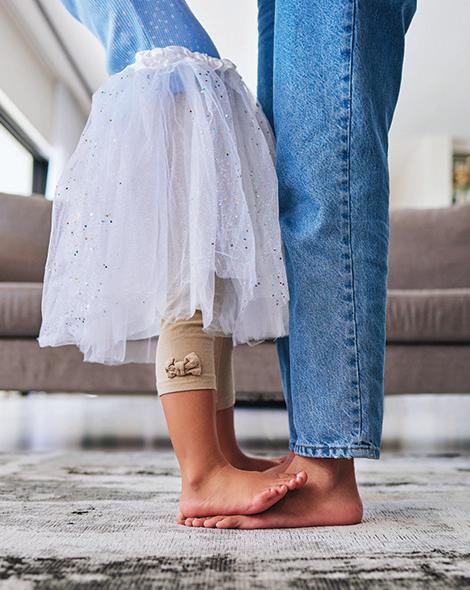
n Take one minute to run comfortably hot water over your hands and relax into the stream. Hot water helps the body release dopamine, a neurotransmitter responsible for inducing joyful feelings, lessening pain and lifting anxiety.
n Instead of scrolling through social media, take 10 or 15 minutes to do nothing. Lie down on the floor, close your eyes and just breathe. Surrender completely to letting go; begin by relaxing facial muscles and work your way down to your toes.
n Play a favorite song and dance with your kids.
n Avoid overscheduling and “shoulds”.

Gardening outdoors adds color and texture to yards and neighborhoods and, with the right plants, attracts pollinators, whose numbers are declining. It also can improve human health. The exercise, sunshine and fresh air promote mental and physical health, and so does our contact with soil microbes and the harmonious patterns of nature.
“Being in the sunlight is a great way to get vitamin D, which is linked to mood and well-being. We spend so much time inside, where our perspective and thoughts can close around us. Getting outdoors can improve mindfulness and the sense of being in the moment, especially when we leave our phones inside,” says Pennsylvaniabased psychologist Seth J. Gillihan, author of Mindful Cognitive Behavioral Therapy: A Simple Path to Healing, Hope and Peace
In a study of the health and well-being benefits of allotment gardening published in the Journal of Public Health, researchers measured the mood, self-esteem and general health markers of people given plots for gardening versus those that didn’t garden at all. The scientists found that the gardeners displayed significantly better self-esteem and experienced less depression and fatigue. The top three reasons participants gave for enjoying their time tinkering in the soil were: being outdoors and having contact with nature (70 percent); feeling a sense of achievement (50 percent); and having the opportunity for restoration and stress relief (35 percent).
Cultivating our outdoor space also gives us a healthy perspective, helping us to accept our limitations and better understand our place in nature. “It’s easy to see in the garden how many things are outside of our control, such as rain, temperature and pests. We can do our best, but at some point, we need to let go,” Gillihan notes, adding that learning to let go is a lesson we can apply to other aspects of our lives.
When he faced a long-term illness coupled with depression, Gillihan built
raised garden beds and planted herbs and vegetables. “I knew I needed to get more involved in something that would bring me a sense of reward and engagement. All of that creative effort really helped to bring me back to life,” he recalls. “In a garden, you’re exercising, but it’s not a repetitive thing like running, so that can make it more fun and seem like less of a task.”
“Digging, walking, carrying and squatting circulate our blood and release dopamine and endorphins in our brains,” says Karen Hugg, author of Leaf Your Troubles Behind: How to Destress and Grow Happiness Through Plants. “We feel more energetic and happier. Similarly, puttering in the garden or designing an ornamental bed is really about playing, and playing is integral to mental health.”
By merely observing greenery we can find peace and clarity. “A tree’s subdividing branches or the whorled arrangement of leaves are patterns that can calm the nervous system. If you look at plants during even a five-minute break, either indoors or out, you’re practicing a kind of relaxation therapy,” Hugg affirms.
A little bit of earth under our fingernails is good for us. “When you get your hands dirty, there are beneficial microbes in the soil that improve your health and well-being,” says Charlie Hall, professor of horticultural studies and department chair at Texas A&M University, who has researched the physiological, psychological and social benefits of plants.
According to Hall, horticultural therapy reduces stress and anxiety, enhances memory and attention span and can improve quality of life for those with physical,
mental or cognitive challenges. Citing the example of disabled adults helping to run a garden center and greenhouse at the Brookwood Community in Brookshire, Texas, he notes, “Working together in a garden builds a sense of belonging. Even those who are not physically able to participate in those activities benefit. Just being in the garden can dramatically reduce the levels of the stress hormone cortisol.”

n Choose a modest space outdoors or purchase small containers.
n Keep it simple and start small with just a few plants.
n Read books to learn about plant needs by region.
n Talk to nurseries that sell native species.
n Think of the garden as a refuge, a place to smell flowers and watch plants thrive.
n View gardening as a fun exercise.
n Join a community garden to cultivate flowers and vegetables in a social setting.
n Grow houseplants, herbs and lettuces to bring in the outdoors.
n Volunteer at a nonprofit that propagates vegetables for food pantries.
Sheryl DeVore is a frequent contributor to national and regional publications and has authored six books on science, health and nature. Learn more at SherylDeVore.wordpress.com.
ACNE: When we are stressed, our body releases cortisol, a hormone that stimulates the production of pore-clogging oils, which can lead to the formation of acne. Stress also triggers inflammation, which can worsen existing acne.
PREMATURE AGING: Stress can accelerate the aging process by reducing the skin’s elasticity and causing wrinkles and fine lines. It triggers the production of free radicals, precipitating damage to collagen and elastin fibers, which are responsible for keeping the skin firm and supple. When they are damaged, the skin becomes saggy.
CHRONIC CONDITIONS: Stress can trigger or worsen skin conditions such as eczema, psoriasis and rosacea, which are characterized by inflammation, dryness and itching.
GET ENOUGH SLEEP. A good night’s sleep is essential for skin health. It also helps reduce the impact of daily stress. Aim for no less than seven hours of shut-eye each night.
EXERCISE REGULARLY. Getting our bodies moving is essential to reduce stress levels and improve skin health by increasing blood flow, nutrient delivery and oxygenation to the skin.
While many of us work out to tone our muscles, we may be neglecting the largest organ in the body: our skin. Every day, it is exposed to a variety of irritants, including ultraviolet rays, air pollution, extreme weather and highly processed foods. Stress can also cause skin irritations and conditions. To serve its important functions and look healthy, our skin needs a fitness regimen. With a few daily routines, lifestyle modifications and coping strategies, a radiant appearance is within reach.

EAT A HEALTHY DIET. “An anti-inflammatory diet full of fruits, veggies and healthy fats like those from seeds and nuts will help to keep skin healthy,” says Jennifer Scheinman, a registered dietitian and nutrition coach. “Foods rich in omega-3 fats like salmon and walnuts are great for skin health since they have natural anti-inflammatory properties, and the fats help to keep skin moisturized.”
PRACTICE STRESS-RELIEVING TECHNIQUES. Engage in activities that help manage stress, such as yoga, meditation or deep-breathing exercises.
APPLY SKIN-CARE PRODUCTS DESIGNED FOR THE PERSON’S SKIN TYPE. According to Dr. Trevor Cates, author of Clean Skin From Within and Natural Beauty Reset, “The most important care tip is to find skin care with mild acidity [4.5 to 5.4 pH] and natural actives [plant-based extracts] that support the skin microbiome. A healthy skin microbiome means less chance for breakouts, blemishes and premature aging.”

According to Dr. Anne Marie Fine, author of Cracking the Beauty Code, “Air pollution has been demonstrated to prematurely age the skin and cause age spots. This is why you want to make sure to consume antioxidants and use antioxidantcontaining, clean skin-care products.”
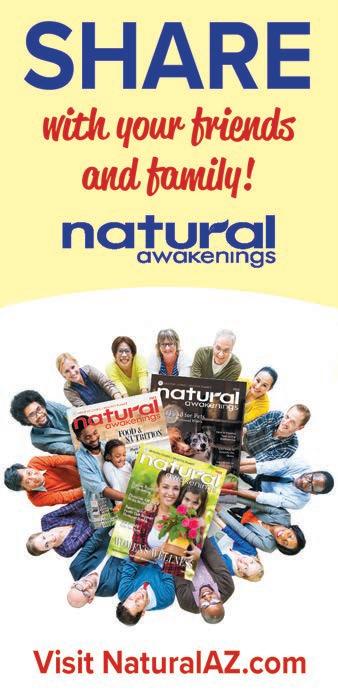

RED-LIGHT THERAPY DEVICES use infrared light to stimulate collagen production, improve circulation and promote healing. This reduces wrinkles, fine lines, age spots and other signs of aging.
MICROCURRENT FACIAL TOOLS use low-level electrical currents to stimulate facial muscles, helping to tone, reduce puffiness and promote a youthful appearance.
LASERS DESIGNED FOR HOME USE offer a safe way to treat various skin issues such as wrinkles, acne scars, sun damage and pigmentation problems. They can also help even out skin tone by stimulating collagen production in the deeper layers of the skin.
GUA SHA is an ancient Chinese technique that involves gently scraping the surface of the skin with a special tool to increase blood flow, promote healing and reduce puffiness and inflammation.
OXYGEN TREATMENTS infused into pores using a special device can help nourish skin cells, decrease inflammation, reduce wrinkles and improve overall complexion.
FACIAL ACUPUNCTURE involves inserting tiny needles into specific points to stimulate energy flow, which may improve circulation, reduce tension and promote smoother skin.
FACIAL MASSAGE reduces wrinkles by stimulating collagen production in the deeper layers of the skin. It promotes circulation, drainage and toning.
David J. Sautter is a certified personal trainer specializing in fitness nutrition and sports conditioning, as well as a professional fitness writer. Learn more at WriteFit.com.

When The New York Times and National Geographic cover the subject of menopause in the same calendar year, perhaps it’s a sign that the inevitable phase of a woman’s life that ushers in vaginal dryness, irregular periods, hot flashes, brain fog, mood swings, night sweats, sleep problems, decreased sex drive and weight gain is finally getting the attention it deserves.
Solutions for women experiencing perimenopause, menopause and post-menopause are not covered in medical school. Instead, they stem from the work of pioneers like Dr. Pamela Wartian Smith, author of What You Must Know About Women’s Hormones: Your Guide to Natural Hormone Treatments for PMS, Menopause, Osteoporosis, PCOS, and More, and Dr. Christiane Northrup, who wrote Women’s Bodies, Women’s Wisdom: Creating Physical and Emotional Health and Healing.
Today, integrative and functional doctors, researchers and continuing education instructors are leading the charge to provide innovative and customized answers for women experiencing vaginal dryness and other hormone-related symptoms.
The earliest sign of changes occurs between the ages of 40 to 44, during perimenopause, and according to Dr. Lindsey Berkson, author of Safe Hormones, Smart Women, vaginal dryness is the flashing red light. “A sign of insufficient hormone signaling, vaginal dryness is the body’s warning that bones are beginning to thin; the brain’s structure, activity and neuron connectivity are beginning to decline; and the aging process has begun,” she explains.
A continuing-education instructor for doctors and pharmacists, Berkson notes, “The vagina doesn’t exist alone. Treating only the vagina is minimized medicine. It’s so important to find a doctor
who practices functional medicine, has completed continuingeducation hours in hormone replacement therapy and nutrition, and has experience in these areas.”

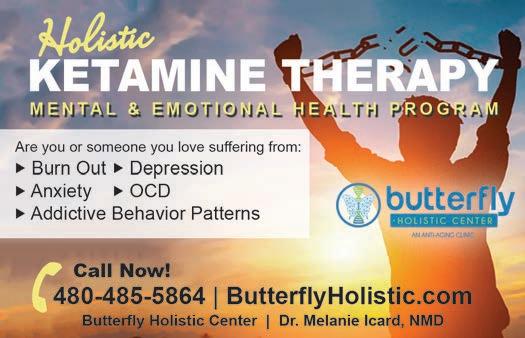
Dr. Meena Malhotra, a double board-certified internist practicing functional and integrative medicine for 27 years, understands that vaginal tissue is hormone-dependent, and dryness left untreated can lead to urinary tract infections that can progress to kidney infections. “Atrophic vaginitis with dryness, itching and burning doesn’t happen overnight; it happens gradually. Many women who are not seeing a gynecologist regularly for checkups are unaware of the gradual decrease of their progesterone and estrogen,” advises the founder of the Heal n Cure Medical Wellness Center, in Glenview, Illinois.
“Women generally self-treat sexual discomfort from dryness first with self-prescribed, over-the-counter gels, suppositories and creams, which are temporary fixes,” Malhotra says. “Functional medicine, which allows for longer appointments, in-depth intake and more intimate conversations, can determine the root cause of vaginal dryness, which can be treated early with FormaV, a non-surgical, painless rejuvenation procedure which tightens loose labia, improves vaginal health and makes sexual intimacy desirable again.”

Known as “the girlfriend doctor”, triple board-certified obstetrician and gynecologist Anna Cabeca has been in practice for 23 years and is the author of The Hormone Fix: Burn Fat Naturally, Boost Energy, Sleep Better, and Stop Hot Flashes, the Keto-Green Way. Recognizing that many over-the-counter lubricants perpetuate dryness and create damage to the tissue, she formulated her own products. “Inflammation can happen because of a reaction to the ingredients in the lubricant. I tell my patients that they can make their own lubricant using organic coconut oil mixed with aloe vera gel and a few drops of an essential oil that turns their partner on. They can also strengthen the pelvic floor with Kegel exercises and eat a keto-green diet,” Cabeca suggests.
Dr. Rebecca Hunton, the founder of Radiantly Healthy MD, in Melbourne, Florida, believes that treating the changes in a woman’s body is a form of personalized medicine. “Every woman’s journey is different, but generally before vaginal dryness comes progesterone deficiency. Symptoms include trouble falling asleep, anxiousness and moodiness,” she says, adding that not all vaginal dryness is hormone-related, as an autoimmune disorder could also be a cause.
Hunton recommends, “Starting early with a transdermal progesterone cream can mitigate some dryness, but at a certain point, progesterone won’t suffice. There are nonsurgical treatments such as MonaLisa Touch, a laser treatment that brings the tissue in the vagina to a more youthful state. It needs to be repeated every 18 months to two years.”
These doctors all agree that women no longer have to power through the changes. There are answers. As Cabeca asserts, “This is a time that heralds a second spring of our lives and should be a beautiful journey.”
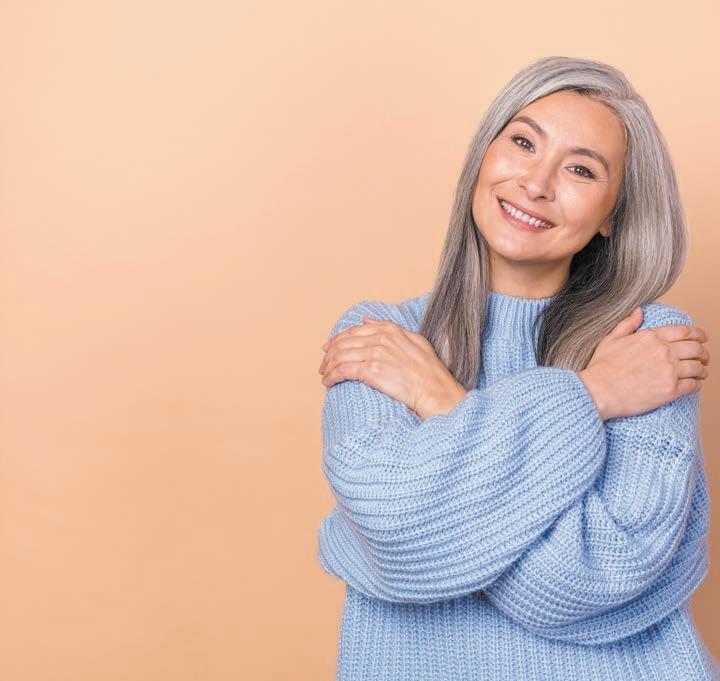 by Suesan Johnson, CCH, CHP, and the team at Natural Medicine and Detox
by Suesan Johnson, CCH, CHP, and the team at Natural Medicine and Detox
Self-care is so important for overall health. The proverbial “put one’s own oxygen mask on before helping others” can be applied to all aspects of life, especially with regard to the primary caregiver role. Women are generally the ones taking care of the needs of their children and those around them. They often put others first and neglect their own basic needs, such as eating healthily, getting enough proper sleep and exercise, and addressing past trauma or stressors, as well as just spending time doing things they enjoy (reading, meditating, going out with friends). This can lead to unhappiness, lack of motivation, adrenal fatigue, and even worse, illness or chronic sickness.
It is a scientific fact that the emotional, mental, physical and spiritual selves need to be in balance for the body to function well. When these basic needs are met, the immune system is stronger and we feel/do better. However, when just one of these is not being fulfilled, that’s when the body can get out of balance and become vulnerable to emotional, mental, physical and spiritual
attacks. It is important for every person, especially women, to be attuned to what their body needs (or doesn’t need) to be moving in the direction of healing. When we care for ourselves first, we are preparing to also take care of others.
Emotional stressors can show up as anxiety, depression/sadness or stress. Our emotions are what makes us human; it is our way to feel and interact with the world. Of course, there are many reasons why one experiences negative emotions, but there are things one can do to help manage them such as seeing a homeopath and getting the right homeopathic remedy, experiencing a method called Thought Field Therapy (TFT) to deal with anger or trauma, trying hypnotherapy to help with unknown issues or help break bad habits, and engaging in meditation or BrainTap. In addition to employing useful tools such as these, it’s also essential to have fun and build healthy relationships and be part of a community.
It is so important to address your emotional body and to observe the state you are
in. What are some of the emotions that you would be better off letting go? For example, frustration, anger, sadness or aimlessness may all be blocking us from bettering ourselves and improving the human experience. To let go of these emotions is a conscious practice, but when you put in the work you will see the results. Through tapping energy centers of the body by using TFT, the body is physically and emotionally able to release past traumas that may be the root cause of an unbalanced emotional state. Through TFT, hypnotherapy, breathwork, sound healing, meditation and other healing modalities, it is possible to transform residual negative emotions to feelings of gratefulness, beauty, certainty and purpose.
Mental issues can be more challenging because there are many factors that can cause unbalance. Some common overlooked factors are environmental toxins and nutritional deficiencies. For example, heavy metal toxins may contribute to depression, fatigue, memory loss, epilepsy, seizures and personality changes. Is your mental health issue resulting from the lack of nutrition or vital minerals? For optimal brain function, one needs the right amount of vitamin D, vitamin Bs (B1, B3, B6, B7, B12, B complex), folate and magnesium, among others. Unfortunately, we cannot get all the vitamins and minerals from our food, so taking quality supplements and/or engaging in intravenous (IV) therapies is recommended. Signs of nutritional deficiency include lack of motivation, fatigue, brain fog and feelings of stagnancy. Our mental state seeks to be always learning, growing and evolving. We cannot be mentally capable of taking on all of life’s happenings and obstacles without being compassionate to ourselves. Meditation is an amazing way to take a still moment for yourself to quite the mind and to just be in the fullness of your own presence. Meditation creates a space of inner peace. For this peace to be found mentally involves being there for yourself physically and assuring that the body is in a nourished state.
Physical body self-care involves eating organic and quality foods, exercising and
spending time connecting with nature and Mother Earth. Walking barefoot (grounding) and detoxing the body from toxins and cellular byproducts are necessary for everyone. We live in a toxic world; our air, water and food are contaminated with chemicals and all kinds of harmful toxins. Helpful detoxification strategies include regular infrared saunas, colon hydrotherapy, acupuncture, homeopathy, and in some cases, IV therapies might be needed to clean up infection and get rid of heavy metals in the body. Detoxing the body improves the immune system, so it can do what it is designed to do naturally. A balanced-feeling individual has the capacity to help others with a clear mind and sound body.
Spiritual self is very personal and maybe the most complex. As we experience life, we are (or ought to be) constantly evolving and nourishing our inner self (our soul). Some people find/connect with their source through prayer, meditation, dance, speaking mantras, breathwork and/or reading spiritual books. Hypnotherapy can be helpful if a person is stuck and experiencing negative spirits or entity attachments.
The spiritual part of the self is where we develop altruism of our highest self. Over time, especially as women, we’ve moved so much into industrial and technological advancement that we have been losing touch with what it means to be fully present and to live in our spirit. To nurture your spirit is to practice what feels right to you. It is to practice presence and authenticity through the way you love yourself and the way you love others. It is to listen to your heart and to be true to yourself and the people you love.
Suesan Johnson is a certified homeopath specializing in acute and constitutional homeopathic health care for children and adults as well as the homeoprophylaxis educational program at Natural Medicine and Detox, in Phoenix. To set up an appointment, call 602-307-0888. For more information, visit NaturalMedicineDetox.com. See ad, page 10.


Advertorial
This spring, join the largest holistic, conscious, spiritual and green network dating site online. We invite you to become a member and feel the energy on our site from the moment you first log in.
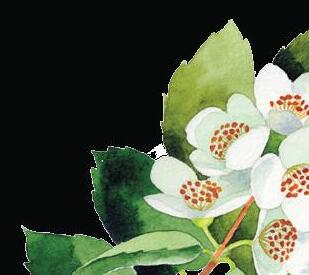


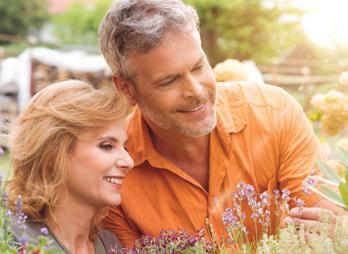


Exposure to plastics, microplastics and nanoplastics is a lifelong inevitability. Researchers are investigating the human health impacts of these synthetic materials, and while we have a growing picture of potential risks, additional scientific exploration is needed to know how petroleumbased polymers affect kids. Though it is impossible to hide from plastics, much can be done to limit children’s exposure.
Global plastic production was estimated to be about 430 million tons in 2021, and humans are continually finding new ways to use it because of its light weight, extreme temperature resistance and low cost. Although plastic takes hundreds of years to fully biodegrade, it breaks down into smaller components that find their way into the ground, air, water, food, clothing, wildlife and our bodies. Microplastics are smaller than five millimeters, while nanoplastics measure from one to 1,000 nanometers. Regardless of size, plastics are packed with toxic compounds, including phthalates, bisphenol A (BPA), polycyclic aromatic hydrocarbons, pesticides, heavy metals and polychlorinated biphenyls.
Studies have shown that microplastics are found in human tissue, including the lungs, placenta and blood. According to research published in Environmental Science & Technology, children consume and inhale an estimated 74,000 to 81,000 particles of microplastics annually. Those amounts could be higher for those that drink more water from plastic bottles than from the tap.

Nano and microplastics (NMPs) build up in the body. Another study published in Environmental Science & Technology reported that by age 18, children accumulate an average of 8,300 particles of microplastics in their tissues, and by age 70 that accumulation grows to 50,100 particles.
A small, but increasing, amount of research links plastic exposure to human health conditions. A review of data to date published in the International Journal of Molecular Sciences found evidence that exposure to NMPs affects both the digestive and nervous systems. The review identified microbiota alterations, intestinal barrier permeability (leaky gut), oxidative stress, inflammation, neurotoxicity and behavioral disturbances. While toxicological research on NMPs has not specifically focused on child health, kids’ immature defense mechanisms make them particularly vulnerable.
“Microplastics are a big problem for fertility,” asserts Jaclyn Smeaton, a licensed naturopathic physician specializing in fertility. The chemicals found in NMPs pose a threat to children’s future reproductive abilities.
Phthalates are chemicals used to make plastics more durable and can be found in
flooring, lubricating oils and personal-care products. According to Yvonne Karney, a gynecologist and CEO of Vitality Renewal, “Phthalates are hormone disruptors that mimic estrogen. They off-gas chemicals that damage the cell membrane and mitochondria.” Studies have linked this chemical to reduced egg quality, less reproductive success and increased gynecological diseases in women; and lower sperm count, lower testosterone, reduced sperm quality and increased DNA damage in men.
Children have higher levels of exposure and are more vulnerable to phthalates. Research conducted by scientists from Columbia University, University of North Carolina and Harvard University found that phthalates increase children’s risks for learning, attention and behavioral disorders. Another study linked prenatal phthalate exposure to lower IQ and problems with attention, hyperactivity and poor social communication in children. “This is all so new that we are just starting to learn about the effects of microplastics,” Karney remarks.
“The first tip is avoidance,” Smeaton says. Eliminate harmful plastics, in particular those labeled with the recycling codes 3 (phthalates), 6 (styrene) and 7 (bisphenols). To protect children, soft vinyl toys, old plastic toys and teething rings should be shunned
“Wear cotton or wool,” recommends Karney. “Air dry synthetic clothes to limit microplastic release. Laundry balls can keep microfibers from breaking off.”
“I can’t overemphasize the importance of ensuring children are eating clean food and drinking clean water,” states Smeaton. In 2020, researchers found microplastics in fruit and vegetables, with highest levels of microplastics in carrots and apples.
“Eating organic can also help, though when contaminants are in soil or water, they can affect even organic produce,” warns Smeaton. “Limit the consumption of shellfish, rice, tea made using a tea bag, table salt and premade meals. Avoid cans and takeaway cups as these are lined with plastic to protect the food. Even if a container states
BPA-free, it may still contain BPA’s cousin, bisphenol S.”
“Employing a water filter is great to remove contaminants, which exist both in city and well water. Reverse osmosis is best, but anything is better than nothing,” says Karney. Look for plastic-free alternatives for cooking and storing food like glass, steel, ceramic and bamboo. Karney also recommends never microwaving foods in plastic, limiting use of bottled water and dusting and vacuuming regularly to remove settled microplastics.
“Avoid exposing children to NMPs in personal-care products,” says Smeaton. She recommends choosing those that meet the standards of the Environmental Working Group (ewg.org/skindeep).
“Pick your battles; focus on what you can control,” Karney advises. “Find things that will not disrupt our life that are doable. It’s not that hard to get a filter for tap water; it is not that hard to get glassware for storing your food.”
Madiha Saeed is a holistic, functional and integrative doctor in Naperville, Illinois, and director of education for Documenting Hope and KnoWEwell.
All pet owners want to see their animals live long, healthy lives filled with activity, but sometimes our furry friends find it difficult to move comfortably due to aging, injuries and other ailments. While vets often suggest surgery for certain debilitating conditions, less invasive treatments might be just as effective with considerably less risk, particularly for animals that cannot tolerate anesthesia.
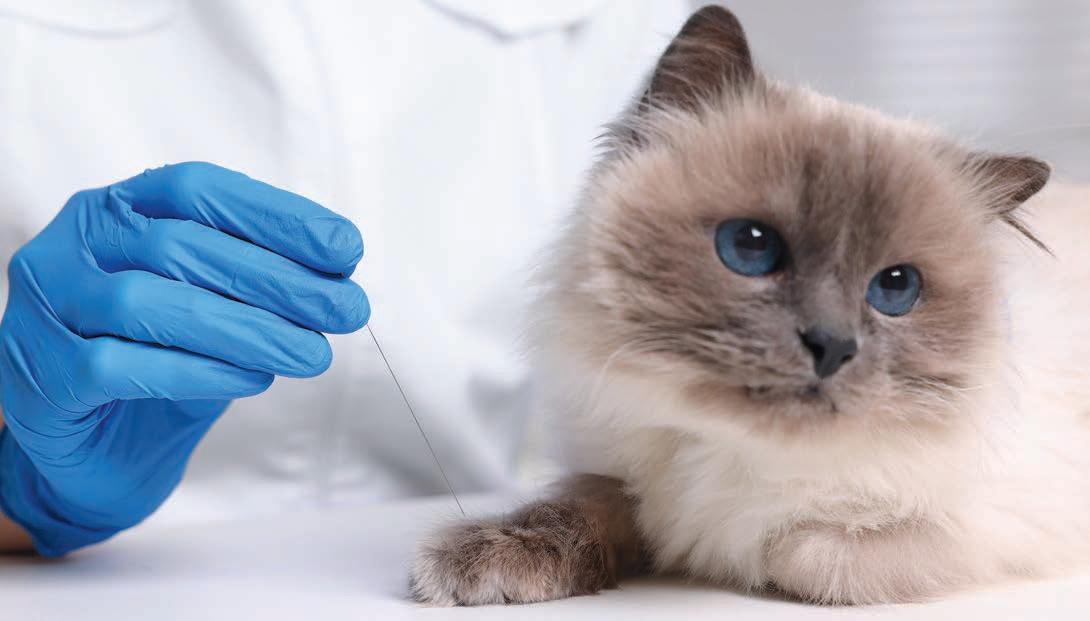
For example, a 2013 University of Minnesota study focused on large-breed, overweight dogs with torn knee ligaments. Half of the dogs were treated with medical management consisting of weight loss, pain medication and physical therapy, and the other half received surgery to repair the torn ligament, followed by the same medi-
cal management. After a year, 75 percent of the dogs treated with surgery and medical management were considered treatment successes, based on leg function, quality of life and gait analysis. Surprisingly, 63.6 percent of the dogs that did not have surgery and received only medical management were also deemed successful cases.
Before considering surgery or other invasive treatments, integrative pet mobility and rehabilitation (IPMR) might be a good way to help a pet regain its vitality without going under the knife. It is a holistic approach to helping pets recover from injuries, manage pain and improve mobility that combines various techniques to provide a comprehensive and personalized plan for each pet.
“It is all about educating pet parents and
preserving the best quality of life for my patients,” says Dr. Joyce Gerardi, of Synergy Integrative Veterinary Clinic. “Over time, my special interests have grown to include platelet-rich plasma, bone marrow aspirate, adipose-derived and allogeneic amniotic stem cell therapies, acupuncture, food therapy, cold laser, herbal medicine, tuina massage, ozone and physical rehabilitation services.”
Here is a look at a few such modalities.
LASER THERAPY uses light energy to stimulate tissue repair and reduce pain. The procedure involves the application of laser light to the damaged area using a handheld device. The severity of the ailment and the location being treated determines the length and frequency of treatments. The patient
will feel a gentle, warm sensation as the laser technician or veterinarian moves the device over the affected area. Pets usually relax and take pleasure in the calming warmth of laser therapy, which is painless.
PHYSICAL THERAPY is an essential component of IPMR. It involves exercises and stretches that help pets regain strength and flexibility in their muscles and joints. A trained physical therapist can customize a plan that targets specific areas of concern such as the hips, knees or spine. This can help reduce pain and improve mobility, allowing pets to move around more easily and enjoy their favorite activities.
ACUPUNCTURE involves inserting tiny needles into specific points on the body to stimulate the nervous system and promote healing. Acupuncture can help relieve pain, reduce inflammation and improve circulation, all contributing to improved pet mobility.
CHIROPRACTIC CARE involves manipulating the spine to correct misalignments and improve overall function. This can help pets with hip dysplasia, arthritis or spinal injuries.
MASSAGE involves gentle pressure and strokes to relax muscles, reduce pain and improve circulation. Massage can also help pets with anxiety or stress, which can contribute to muscle tension and pain.
NUTRITION: A well-balanced, nutrientdense diet can help with healing, inflammation reduction and overall health. A qualified veterinarian can recommend a diet plan tailored to each pet’s needs.
Reducing a pet’s discomfort with full-spectrum cannabinoids or, if needed, prescription pain medications offers better comfort and recovery time. Another option is to reduce a pet’s stress by balancing its adrenal stress hormones.
Ruth Roberts is a holistic veterinarian and certified pet health coach with more than 30 years’ experience.
Starts May 6 • 10-11am
Join us for gentle Yoga flow with Jeanne Staron. Experience the impact of Frank Lloyd Wright’s organic architecture and design through guided activities such as Yoga, Tai Chi, meditation and hiking.
Cost: $25
12621 N Frank Lloyd Wright Blvd, Scottsdale 480-860-2700
Register at: FranklLoydWright.org/ taliesin-west/wellness
May 16 • 5:30-6:30pm
Join us for Yoga and Meditation with Nancy Butterly. Experience the impact of Frank Lloyd Wright’s organic architecture and design through guided activities such as Yoga, Tai Chi, meditation and hiking.
Cost: $25
12621 N Frank Lloyd Wright Blvd, Scottsdale 480-860-2700
Register at: FranklLoydWright.org/ taliesin-west/wellness
November 1-5
Please note that all deadlines (advertising and editorial) are the 10th of the month prior to the edition being published. For example, May 10 is the deadline for all June edition submissions.

Celebrate Day of the Dead, making art and reviving your spirit! The retreat, hosted by Spiritweave Art Journeys, includes visual journaling, making a retablo, sound healing, local cuisine, art opening and more. Email for complete itinerary and pricing.
Sally Blevins, BFA, MA, LPC 817-449-5485

Sally@ConnectTherapiesllc.com
CALENDAR
Find and post events at NaturalAZ.com
Struggling to find happiness or the courage to chase your dreams? Feeling stuck or like there has to be more to life? Spirit and I can help guide you to a reality you love and a fulfillment your soul has been longing for.

Kenzie: 630-917-4404
IntuitiveHealingByKenzie.com
Connecting you to the leaders in natural health care and green living in our community. To find out how you can be included in the Business Directory, email PhoenixAds@NaturalAZ.com or visit NaturalAZ.com and download our media kit.

480-676-0510
Info@AllergyClearingTechnique.com
AllergyClearingTechnique.com
Learn a process to potentially clear food allergy response. Home study course with training manual and training videos. Not NAET. No shots, No drops, No bloodwork—No kidding. See ad, page 12.
LEADING EDGE WELLNESS

MacKenzie Kalt, Owner/Director



4050 E Greenway Rd, Ste 5, Phoenix 480-594-5052 • NatPainTreat.com
Providing some of the most advanced natural technologies for those struggling with chronic pain, injuries, stress, migraine headaches, PTSD, insomnia, Lyme disease, autoimmune disorders, skin conditions, and much more. Visit our website to learn more. See ad, inside front cover.
NATURAL MEDICINE & DETOX
2701 N 7th St, Phoenix 602-307-0888
NaturalMedicineDetox.com
We offer a wide range of services that can help just about everyone at affordable prices. We also accept insurance for acupuncture, including Medicare. Please take a look at our website to learn about our services, gifted practitioners, and insurance information and form to see if your plan covers acupuncture. See ad, page 10.
PIHMA COLLEGE & CLINIC
Acupuncture, Herbal Medicine and Homeopathic Clinic
301 E Bethany Home Rd, Ste A-100, Phoenix 602-274-1885 • pihma.edu
PIHMA offers Acupuncture

Treatments, Herbal Consultations, Acute and Constitutional Homeopathic Consultations, as well as Auricular Acupuncture, Cupping, Moxibustion, Gua Sha and Tui Na. Our medicines have been used for thousands of years to treat numerous conditions, including pain, stress and more. PIHMA is a teaching clinic and offers affordable pricing.
SW HERB SHOP & GATHERING PLACE
148 N Center St, Mesa 480-694-9931 • SWHerb.com Store.SWHerb.com
Kathy Gould and Madalyn Johnson, herbalists and proprietors, offer medicinal bulk herbs and specialty tea blends, herbal extracts, certification classes, community and therapist rental space, medicine-making supplies, and more. See ad, page 17.
WATERCOLOR ART CLASSES
Allura Westly
3611 E Sunnyside Dr, Phoenix AlluraWatercolor@cox.net 602-469-0524 • AlluraWaterColor.com
Allura Westly, master teacher, opens her sanctuary studio to all levels, beginner to advanced. Learn fluid color technique, drawing and composition. Small class of eight students. No talent required, just a desire to create.
BENNETT’S CARPET & UPHOLSTERY CLEANING
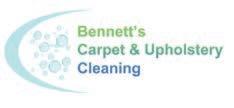
Valleywide Service • 480-994-4988
BennettsCarpetCleaningAZ.com
Eco-friendlycarpet and upholstery cleaning. Featuring organic cleaners and odor removal products derived from renewable seed and vegetable sources. No perfumes, solvents or other hazardous products. No phosphates. Products also available for in-home use. Licensed and owner operated since 1974. See ad, page 11.
MILLENNIUM DENTAL ASSOCIATES
5705 N Scottsdale Rd, Ste D-110, Scottsdale 480-948-0560
MillDental.com

Dr. Michael Margolis and Dr. Stephen Kovar
2045 S Vineyard Rd, Ste 153, Mesa 480-833-2232 • MyDentistAZ.com

A holistic and biological approach to your dental needs and overall health. Bio-compatible dentistry, esthetic dentistry lumineers/veneers, family dentistry and much more. See ad, page 3.
NATURAL DENTAL PARTNERS
3134 W Carefree Hwy, Ste 9, Phoenix 602-775-5120 • MyNaturalDentist.com
The doctors at Natural Dental Partners take the time to listen to your concerns and use their extensive experience to help you achieve better health. Using the latest technology (such as lowdose 3D imaging, CEREC, lasers, PRF, ozone and treatment of sleep disorders), they believe in a team approach to help you achieve your healthcare goals. Check out MyNaturalDentist. com or ABreathOfHealth.com to see how they can help you. See ad, pages 5 and 15.
BUTTERFLY HOLISTIC CENTER
Melanie Icard, NMD 1430 E Missouri Ave, Ste B127, Phoenix 602-353-7712 • ButterflyHolistic.com


Dr. Icard specializes in biological medicine, peptides, PRP, aesthetics and ozone therapy. Her offerings include holistic antiaging medicine, pain reversal, natural and traditional aesthetics, ozone therapy, holistic ketamine therapy, and sexual health regeneration. See ad, pages 11 and 29.

Millennium Dental offers more than 50 years’ experience in holistic dentistry, including advanced general dentistry

Certified by the IABDM. See ad, page 9.

BLU DRAGON
Pat Duryea, PhD
6102 N 16th St, Ste 19, Phoenix
480-665-9781
PhxBluDragon.com
The Blu Room is patented technology, bringing ancient and future technologies of sound, light and sacred geometry together in the NOW. Clients relax on a therapeutic bed bathed in light and sound vibrations for 20 minutes. Clients report less stress, better sleep, better focus, and better health. Mention Natural Awakenings and receive a 25% discount.
15215 S 48th St, Ste 154, Phoenix
Kim@IntuitiveKim.com
IntuitiveKim.com
Kim is an Intuitive and Healing Touch Certified Practitioner offering guidance when you feel out of alignment with your authentic self. Stress, fear, anxiety and grief/loss throw us off balance, making it challenging to access inner wisdom. Sessions include reading and clearing your energy field; and simple, practical self-healing tools to keep you balanced and grounded. See ad, page 10.
ARIZONA ORGANIC PEST & TERMITE CONTROL

Organic Pest Control
602-923-1457 • ArizonaOrganic.com
Avoid being exposed to dangerous chemicals when all-natural and safer alternatives work just as well and last longer. See ad, page 29.
SOUTHWEST INSTITUTE OF HEALING ARTS

1538 E Southern Ave, Tempe 480-994-9244
Info@swiha.edu • swiha.edu
Nationally accredited college offers holistic health and wellness degrees, diplomas, certificates of excellence, continuing education and personal development, oncampus and online. Financial aid available. See ad, outside back cover.
DIMENSIONS OF HEAVEN AND EARTH

11108 N Frank Lloyd Wright Blvd, Ste E16, Scottsdale 732-832-1036
DimensionsOfHeavenAndEarth.com
Dimensions of Heaven and Earth is Scottsdale’s exciting, new one-stop Spiritual Experience: a center of healing and insight combined with a store full of unique gifts from local artisans. With training and tools for your personal development, we are excited to help you take your spiritual journey to new levels! See ad, page 27.
ECKANKAR

The Path of Spiritual Freedom
1-877-300-4949 • EckankarArizona.org
Eckankar.org • HearHU.org
Facebook.com/EckankarArizona
Eckankar is an active, individual, creative spiritual practice. A companion and roadmap for your journey home—to the heights of SelfDiscovery and God-Discovery, and beyond. Come along and discover the most secret part of yourself. The key to spiritual freedom lies within you. Explore life as a Soul Adventure. See ad, page 18.

ANDREA
AKA “CRITTER DOC”
ASAM, Sh. Reiki, HTAP
Communicator, Healer, Counselor
602-317-1543 • CritterDoc1@cox.net SpiritAnimalWisdom.com
With a gentle healing touch, Andrea provides wellness counseling, energy healing, animal communication, and intuitive counsel for pets and their people.


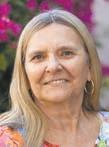
COMING

4105 N 20th St, Ste 115, Phoenix 480-442-5020
SummitLighthousePhoenix@gmail.com SummitLighthousePhoenix.org
Dedicated to sharing Saint Germain’s Violet Flame. All faiths welcome. Learn how you can become a modern day mystic. We are dedicated to sharing the Teachings of the Ascended Masters® to help you bring in joy and peace to the world. Learn what the requirements are to make your ascension. See ad, page 27.
Roadrunner Park Farmers Market 3502 E Cactus Rd, Phoenix
Saturdays Oct-May 8am-1pm | Jun-Sep 7am-11am
Facebook.com/RoadrunnerParkFarmersMarket
Singh Meadows Farmers Market 1490 E Weber Dr
Fridays, Saturdays & Sundays 8am-2pm
Facebook.com/SinghFarms
Sun City Farmers Market 16820 N 99th Ave
Thursdays Oct-May 9am-1pm
Facebook.com/Sun-City-Farmers-Market631299790224049



The Capitol Farmers Market 1700 Adams St, Phoenix
Thursdays 10:30am-1:30pm
ArizonaCommunityFarmersMarkets.com
Uptown Farmers Market 5757 N Central Ave, Phoenix
Wednesdays Oct-Apr 9am-1pm & May-Jun
NOTE: Please check market websites and ArizonaCommunityFarmersMarkets.com for more information on days and hours, and any restrictions.



Ahwatukee Farmers Market
4700 E Warner Rd, Phoenix
Sundays Oct-May 9am-1pm
Jun-Sep 8am-11am
Facebook.com/AhwatukeeFarmersMarket
Care 1st Farmers Market
328 W Western Ave, Avondale
Tuesdays Jul-Oct 8am-noon
ArizonaCommunityFarmersMarkets.com
Carefree Farmers Market
1 Sundial Circle
Fridays Oct-May 9am-1pm
Jun-Sep 8am-11am
Facebook.com/CarefreeFarmersMarket
Downtown Chandler Farmers Market
3 S Arizona Ave
Saturdays Oct-May 9am-1pm
Jun-Sep 7am-10:30am
Facebook.com/ChandlerFarmersMarket
Downtown Mesa Farmers Market
1 E Main St
Saturdays 8am-noon
dtMesaFarmersMarket.com
Downtown Phoenix Farmers Market 721 N Central Ave
Saturdays Oct-Apr 8am-1pm
May-Sep 7am-11am
DowntownPhoenixFarmersMarket.org
Gilbert Farmers Market
222 N Ash St
Saturdays Oct-Mar/Apr 8am-noon Apr/May-Sep 7am-11am GilbertMarket.com
High Street Farmers Market 5415 E High St, Phoenix
Sundays Oct-May 10am-1pm
Facebook.com/Farmers-Market-on-HighStreet-2244771575799425
Mommas Organic Market
Arrowhead Farmers Market
7780 W Arrowhead Towne Center, Glendale
Saturdays Oct-May 9am-1pm | Jun-Sep 8-11am Facebook.com/Getlocalazfarmersmarkets GetLocalArizonaEvents.com
Mommas Organic Market
Glendale Farmers Market at Cabela’s 9380 W Glendale Ave, Glendale, AZ 85305
Sundays Sep-May 10am-2pm | closed for summer
Facebook.com/Getlocalazfarmersmarkets
GetLocalArizonaEvents.com
Old Town Scottsdale Farmers Market
3806 N Brown Ave
Saturdays 8am-1pm
ArizonaCommunityFarmersMarkets.com
Power Road Farmers Market 4011 S Power Rd, Mesa
Monday-Saturday 9am-5pm | Sunday 9am-4pm PowerrdFarmersMarket.com
8am-noon
Saturdays Nov-Apr 9am-1pm & May-Oct 8am-noon
UptownMarketAZ.com
Verrado Community Farmers Market N Market Pl & W Main St, Buckeye
Sundays Oct-Jun 9am-1pm
Facebook.com/VerradoCommunityFarmersMarket
Flagstaff Community Farmers Market 211 W Aspen Ave, City Hall Parking Lot
Sundays May-Oct 8am-noon
FlagstaffMarket.com
Prescott Farmers Market
Dignity Health, YRMC
900 Iron Springs Rd, Miller Valley Lot
Saturdays 7:30am-noon
PrescottFarmersMarket.org
Sedona Summer Community Farmers Market
Tlaquepaque/Creekside, 336 Hwy 179
Fridays May-Oct 8-11:30am
Sedona-Farmers-Market.com
Sedona Winter Community Farmers Market
Wells Fargo Bank Parking Lot 2201 W State Rte 89A, West Sedona
Sundays Oct-May noon-4pm
Sedona-Farmers-Market.com

